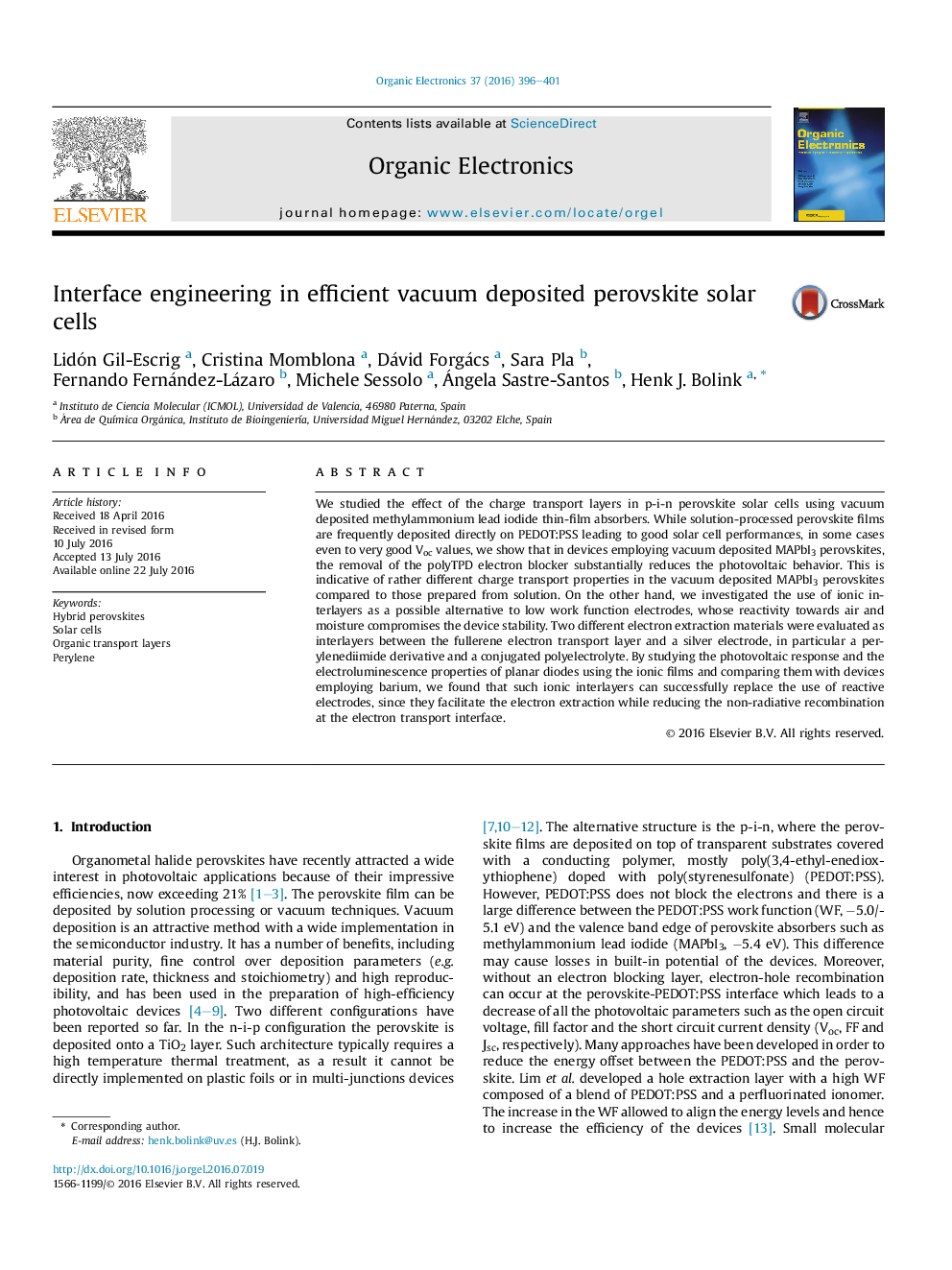| Article ID | Journal | Published Year | Pages | File Type |
|---|---|---|---|---|
| 1264700 | Organic Electronics | 2016 | 6 Pages |
•In vacuum deposited p-i-n perovskite solar cells both hole and electron blocking layers are needed for efficient performance.•Charge carrier transport in perovskite thin-films is rather dependent on the deposition method used.•Ionic ETLs improve performance compared to low work function metals due to higher reflectivity and good energy level matching.
We studied the effect of the charge transport layers in p-i-n perovskite solar cells using vacuum deposited methylammonium lead iodide thin-film absorbers. While solution-processed perovskite films are frequently deposited directly on PEDOT:PSS leading to good solar cell performances, in some cases even to very good Voc values, we show that in devices employing vacuum deposited MAPbI3 perovskites, the removal of the polyTPD electron blocker substantially reduces the photovoltaic behavior. This is indicative of rather different charge transport properties in the vacuum deposited MAPbI3 perovskites compared to those prepared from solution. On the other hand, we investigated the use of ionic interlayers as a possible alternative to low work function electrodes, whose reactivity towards air and moisture compromises the device stability. Two different electron extraction materials were evaluated as interlayers between the fullerene electron transport layer and a silver electrode, in particular a perylenediimide derivative and a conjugated polyelectrolyte. By studying the photovoltaic response and the electroluminescence properties of planar diodes using the ionic films and comparing them with devices employing barium, we found that such ionic interlayers can successfully replace the use of reactive electrodes, since they facilitate the electron extraction while reducing the non-radiative recombination at the electron transport interface.
Graphical abstractFigure optionsDownload full-size imageDownload as PowerPoint slide
